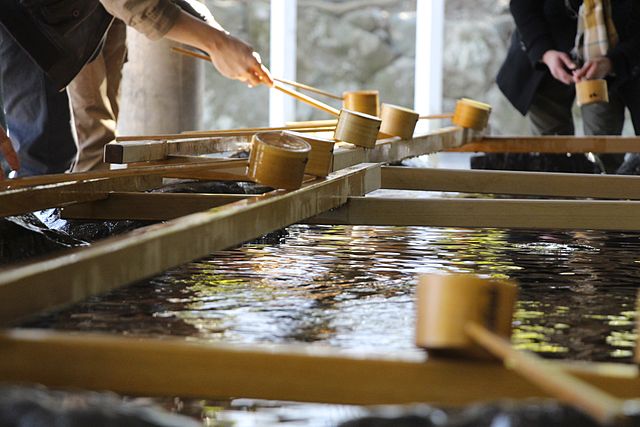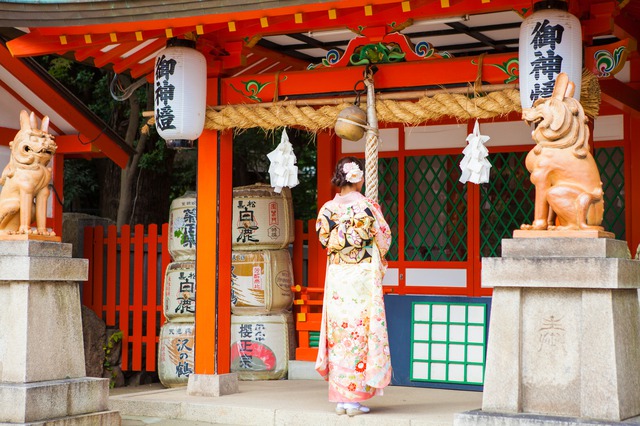
Proper Shrine Worship Etiquette
"'Jinja' (shrine) is the religious institution of the Japanese religion, Shinto, as well as the center of religious etiquette and ceremonies. The entire area within the torii gates is considered to be the 'Shinto precincts where the deities quiet down'."
This post may contain affiliate links. If you buy through them, we may earn a commission at no additional cost to you.
"The origin of the shrine comes from rocks or objects where the gods would reside, which were represented on festival days by temporary altars and makeshift shrines such as land surrounded by evergreens or a sakaki branch on an eight-legged table."
First, bow once before you pass through the torii gate.
'Torii' are not just the representation of the entrance to the jinja, but also the red gate that punctuates where the world of humans ends and where the world of the gods begins. In regards to the etiquette of treading on such sacred ground, first you bow. Also, when you pass through the gate after bowing, you must not walk in the center of the road. The center is the road for the gods.
Rinse your hands and mouth at the ritual cleansing place (either the chouzu or temizuya).
Technically, you're supposed to cleanse your entire body in a river or other body of water, but you can just rinse your hands and mouth at this temizuya.
1) Hold the ladle in your right hand, draw water, and wash your left hand.
2) Put the ladle into your left hand, and wash your right hand.
3) Switch the ladle into your right hand, draw water, and pour water into the palm of your hand.
4) Rinse your mouth using the water that's in your hand.
5) While covering your mouth with your left hand so no one can see, spit the water out into the designated draining area by your feet.
6) Much like 1), please wash your left hand.
7) To wash the ladle you used, raise the ladle vertically so the rest of the water can spill out over the handle.
Ring the bell
In regards to the jinja's haiden (the place where you pray), pull strongly on the rope attached to the bell so it rings.
It has the meaning of "I'm sorry to bother you."
Bow twice, clap your hands twice, bow once.
Bow twice at 90 degrees.
After that, clap twice. The second time you clap, keep your hands pressed together and pray that way.
Clapping is proof that you come unarmed, and shows that you are praying for a peaceful life.
When you finish praying, bow once more. Take a few steps backwards before turning backwards and returning to your original path.
The number of bows and claps may change depending on the jinja, so please check first.
If you pull an omikuji and it turns out well, you can take it home with you. An omikuji is a fortune that comes from the shrine itself. They're usually made from paper. However, if you get a fortune that says daikyou (terrible luck), kyou (bad luck), or some other bad image, you should tie it to the prepared rope. That is repaying the bad luck. (Of course, you can take it home to reread it before you tie it on.)
Do not tie it to a tree branch on the premises. Gods also live in the trees, so do your best to not wound them.
Return to your original path and depart through the tori gate.
Just like before, don't walk in the center of the path. If you can, walk as far to the side as you can.
Once you pass through the last torii, you have returned to the world of the humans.
Face the shrine building again and give a light bow to politely indicate your thanks.
The information in this article is accurate at the time of publication.








